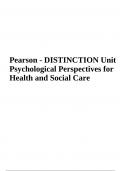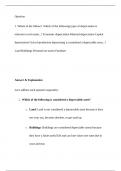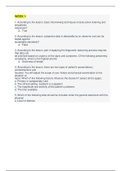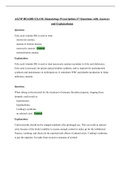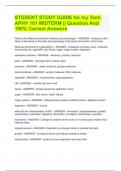Exam (elaborations)
Pearson - DISTINCTION Unit 11 Psychological Perspectives for Health and Social Care.
- Institution
- Pearson (PEARSON)
Pearson - DISTINCTION Unit 11 Psychological Perspectives for Health and Social Care.Aim and purpose: This unit aims to enable learners to understand the different psychological approaches that can be used when studying and in particular how these can be used to study health and social care. This ...
[Show more]
